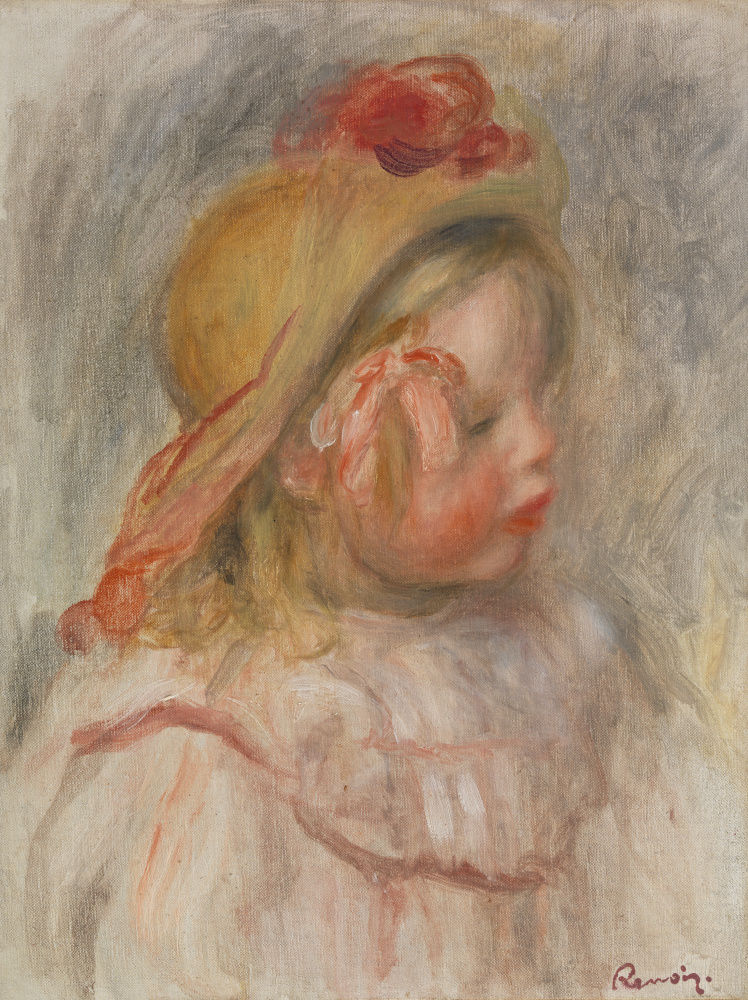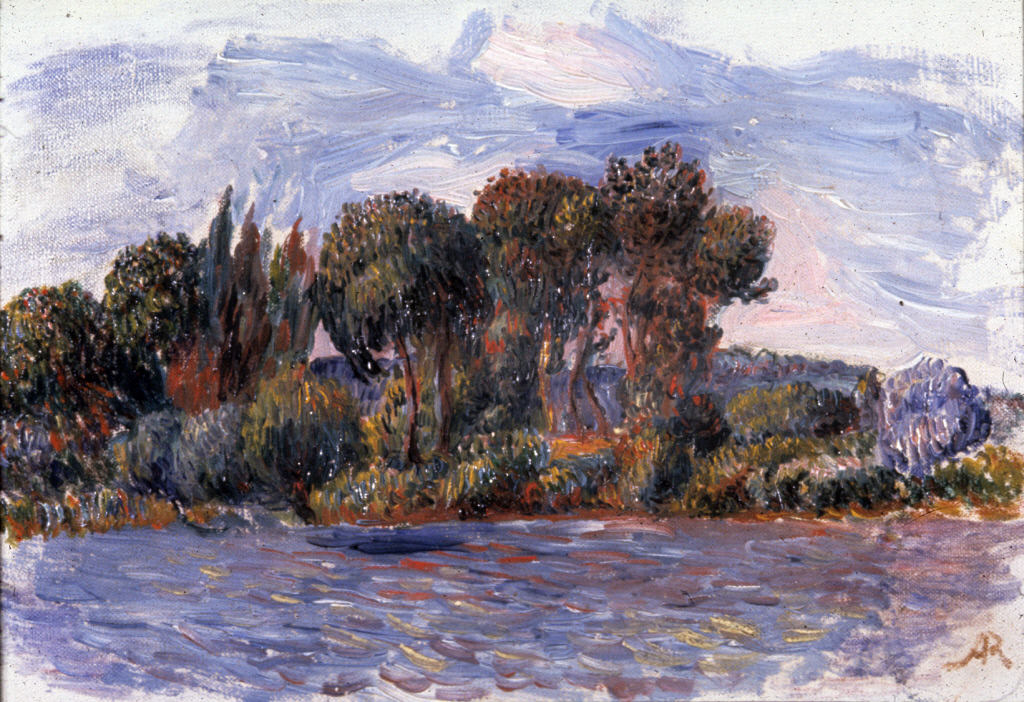- Open today, 10 am to 5 pm.
- Parking & Directions
- Free Admission
Leaving an Impression

Pierre Auguste Renoir (French, 1841-1919), Coco en chapeau de paille, 1904, Oil on canvas
Pierre-Auguste Renoir (1841–1919) devoted his life to painting. Nothing could stop his passion for it, not even health challenges. When he developed rheumatoid arthritis around 1892, he often painted with brushes tied to his fingers. Perhaps, the Chrysler’s latest Renoir acquisition, Portrait of Claude Renoir (Coco) (1904), was painted in this way.
The late Renoir painting was a gift from longtime Museum Members Frances M. Lindsay and Harvey L. Lindsay, Jr. It was given to the Chrysler in Frances’s memory by Harvey; his daughters Katherine Lindsay-Bennett, Franny Beasley, and Betsy Goode; and sons Bobby King and Billy King.
Frances always intended to donate the painting to the Chrysler Museum. She was an avid art collector and didn’t base her collecting decisions on advice from family and friends. Instead, she surrounded herself with works that suited her personal taste, including this Impressionist work by Renoir.
“Impressionist art is one of the anchors of the Chrysler collection, with key examples by all the major French Impressionist artists. This acquisition gives us our first late Renoir painting, allowing us to exhibit the full chronological range of his work,” said Lloyd DeWitt, PhD, the Chrysler’s Chief Curator and Irene Leache Curator of European Art.
Portrait of Claude Renoir (Coco) displays Renoir’s evolution of style as he ventured away from impressionism and used thinner paint and longer brushstrokes. Although his current popularity stems from his Impressionist style, he gained notoriety during his lifetime from other artists who appreciated the loose technique. Late in his career, Renoir turned to his son Claude (Coco) for inspiration. Claude was born when Renoir was sixty years old and quickly became one of his favorite subjects.
“Renoir’s late style, represented in this wonderful bequest, was much more admired than his early work by artists of the next generation including Cezanne, Matisse, and Picasso. While the revolutionary style and method of his Impressionist works of the 1870s and 1880s are more influential today, his later works have recently undergone a major reevaluation and are being newly appreciated for their more fluid and ‘classical’ style,” DeWitt said.
This isn’t the Chrysler’s first work by Renoir. More than fifty years ago, community members—young and old— got together to purchase the Chrysler’s first Renoir, Trees by the Edge of a River (ca. 1875–1880). Inaugurated by Norfolk mayor Roy B. Martin, Jr., a year-long public subscription drive involved nearly 20,000 local contributors—from civic leaders to school children. Together, they raised funds for the Museum’s first Impressionist picture that was purchased in 1967. Although Trees by the Edge of a River is small, measuring just over 5×7 inches, the painting holds a significant place in the hearts of the citizens of Hampton Roads who worked tirelessly to acquire the gem of a landscape. The late-nineteenth-century work can be traced to the collection of Paris art dealer Ambroise Vollard, who worked closely with Renoir and acquired the piece from the artist.

Pierre Auguste Renoir (French, 1841-1919), Trees by the Edge of a River, ca. 1875-1880
In 1971, Walter P. Chrysler, Jr. gifted many works by Renoir from his private collection, including several etchings and an unusually large number of bronze sculptures. Like Portrait of Claude Renoir (Coco), the sculptures were created later in Renoir’s career as he worked with limited mobility. The artist produced them with the assistance of the young Catalan sculptor Richard Guino. Vollard suggested the partnership.
“Renoir had become nearly paralyzed with rheumatism and directed Giuno, using drawings, to produce figures based on his paintings. The Chrysler’s two busts of Paris show the young Greek shepherd, who was chosen by the gods to judge the most beautiful three goddesses to receive a golden apple. For the second version of the bust, Renoir changed his mind and had Guino add a mustache,” DeWitt said.
Guino also modeled a set of relief roundels of the six artists Renoir admired most. Besides the expected fellow Impressionist Claude Monet and admirer Paul Cezanne, the set includes earlier artists such as the neoclassical landscape artist Camille Corot as well as Eugene Delacroix, whom Renoir admired for his flowing style and dramatic color.

Pierre Auguste Renoir (French, 1841-1919), Paris Avec Mustache, 1915, Bronze
Renoir, never one to be limited by style or medium, produced thousands of paintings during his lifetime. Before his death in 1919, he returned to the Louvre in Paris to see his paintings hanging amongst works by the Old Masters.

